|
31st January 2022
Recently we have been looking at the LEO I Operator's Console and what evidence exists to show us what it looked like and how it was used. Whatever clues we can gather will form the basis of the Operator's Console that will appear in the virtual LEO I that is under construction.
So where do we look? There are several photographs of the LEO I installation at Cadby Hall that include the Operator's Console. In addition, two of the original operators that used the console have shared their memories with us. I think we now have enough to build a virtual version.
Like so many components found within that room, the Operator's Console has a story to tell that offers us an insight into this remarkable machine and the organisation in which it is hosted. LEO I after all was never one machine, it was a development environment, a pilot and perhaps even an experiment. From the basic functional description that is based on the Cambridge EDSAC computer, LEO I will march inevitably towards meeting two key criteria for its success. Firstly, it must take its place like a piece in a jigsaw, into the organisation that is Lyons. It must serve a purpose within the functions of a large business and that will be in the minds of those pioneers of LEO as they bring this machine to life. Building a functioning computer will never be enough, it must serve a business needing reliability and provide significant added value to the business functions it will be applied to.
Secondly, as LEO I moves from a development to an operational environment, its design and function must also adapt to those charged with operating the resource on a day to day basis. LEO I must become a workplace for its operators, not just its developers, engineers and designers. You can see this shift very clearly through the emergence of the Operator's Console.
There were two 'consoles' connected to LEO I. The Engineer's Console and the Operator's Console.
The LEO I Engineer's Console was a key part of the design of LEO I right from the start. The photo below (68) shows a view of LEO I in the very early days of construction and you can see the shell of the Engineer's Console in place at one end of the LEO I racks.
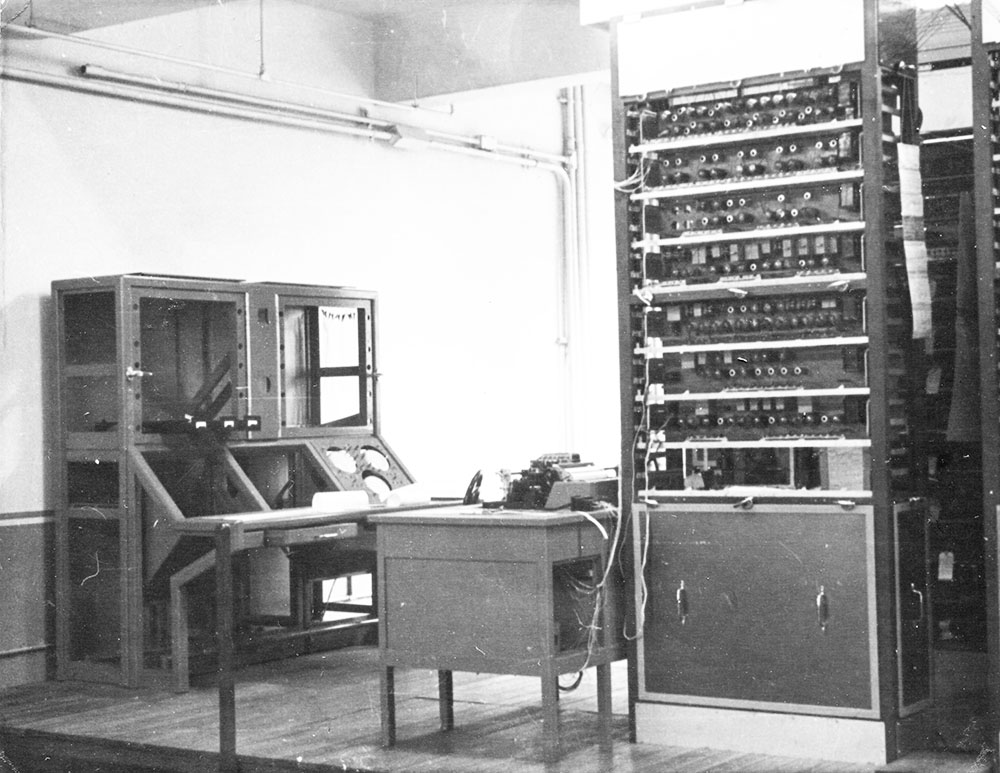
Photo 106 below shows us a view through the racks of the Lyons Engineer Ernest Lenaerts working on the console.
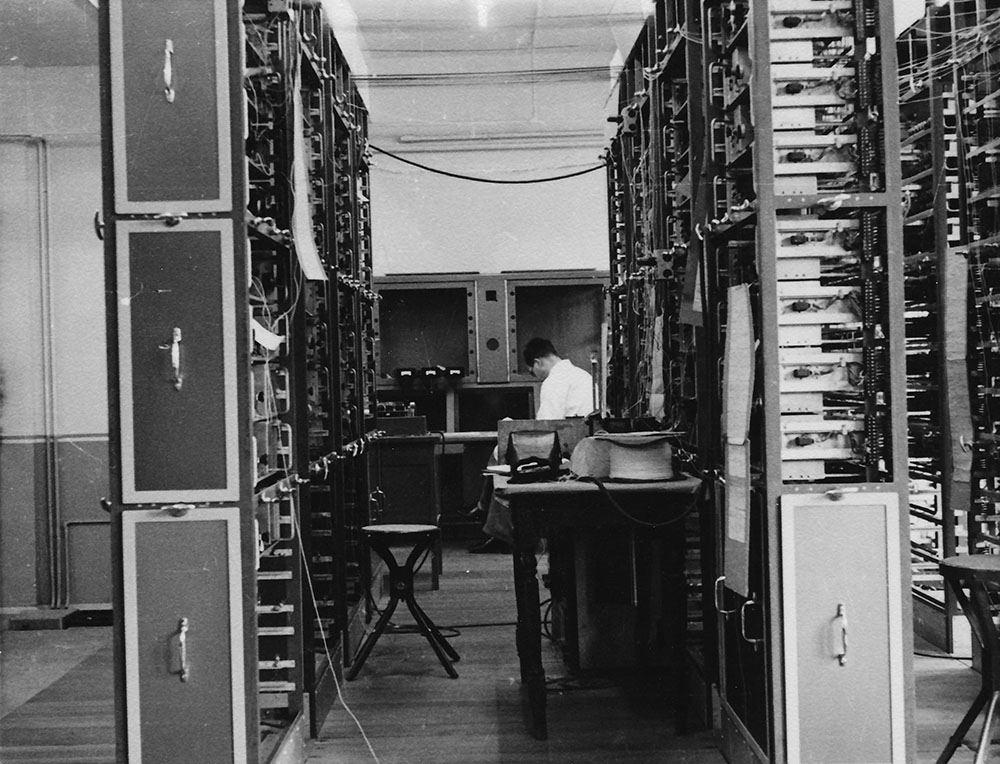
This console was to provide those developing LEO I and those maintaining it, with access to critical information and functions to aid their work. The Engineer's Console will grow in complexity and become a vital part of the functioning of the machine. Photo 108 below will come to represent a common perspective on LEO I, a view between the racks of the Engineer's Console at one end.
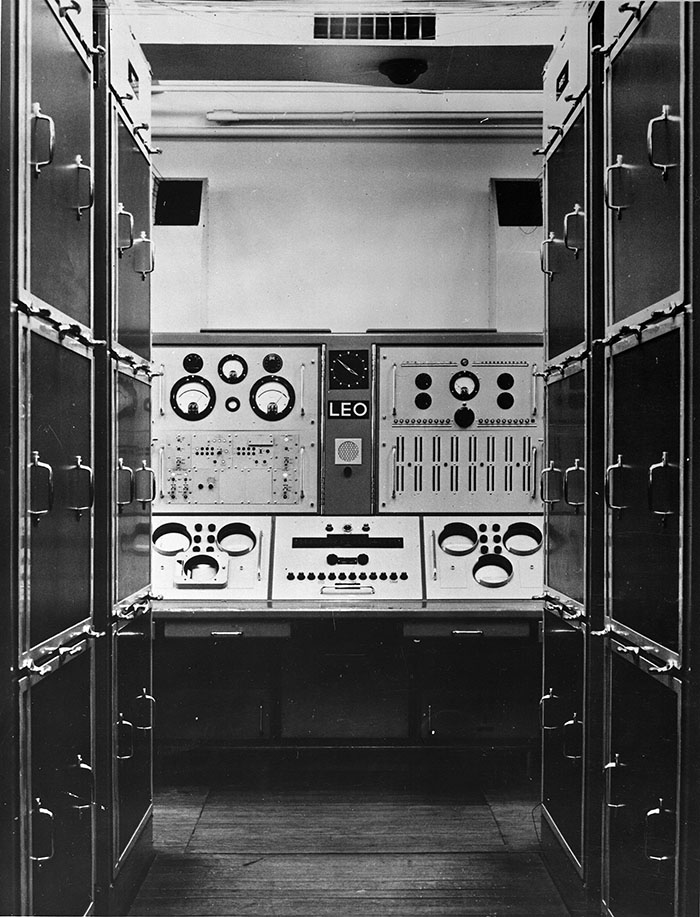
For those interested, you can explore many more images of LEO I and the Engineer's Console through the LEOPhotoApp , including Photos; 10, 102, 85, 6, 83, 52, 88, 18, 48 and others.
If the Engineer's Console was to be such a key part of LEO, why did they need an Operator's Console?
The construction of the Operator's Console represented the inevitable shift from development to operation. As the peripheral side of the Calculator Room at Cadby Hall, was developed and populated with punched card and paper tape machines, it became clear that the day to day operators of LEO I were 'running' between the peripheral devices on one side of the room to the Engineer's panel close to the LEO racks on the other side of the room, in order to stop, start and monitor jobs that LEO I was working on. To make this more efficient and to better integrate LEO I into its primary function as part of the business, the controls required by the operators needed to be closer to where they worked, closer to the peripheral devices.
Photo 3 below taken around 1953 shows the peripheral side of the Calculator Room with few devices. However, in the middle and to the left of the punched paper tape station, there appears to be a simple 'table' with a few controls installed in the top. Could this be the first iteration of the Operator's Console? A way of controlling punched card and tape devices from the area in which they are installed? (see also Photo 28)
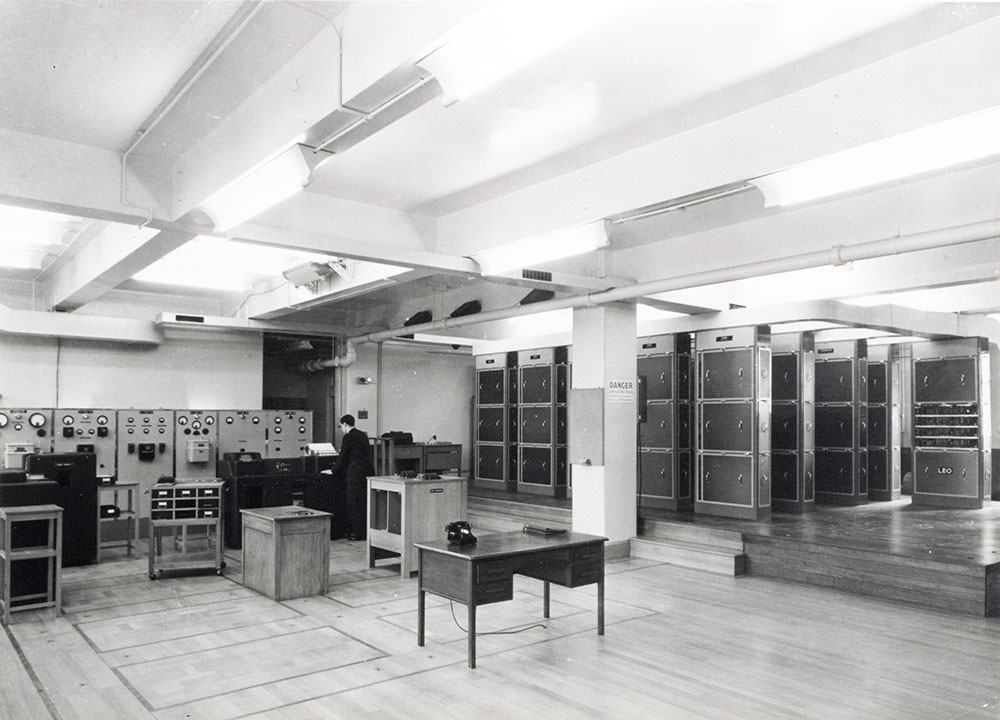
By 1954 the need for a designed Operator's Console is part of the development of LEO as a useful machine. Photo 25 below shows the new console under construction.
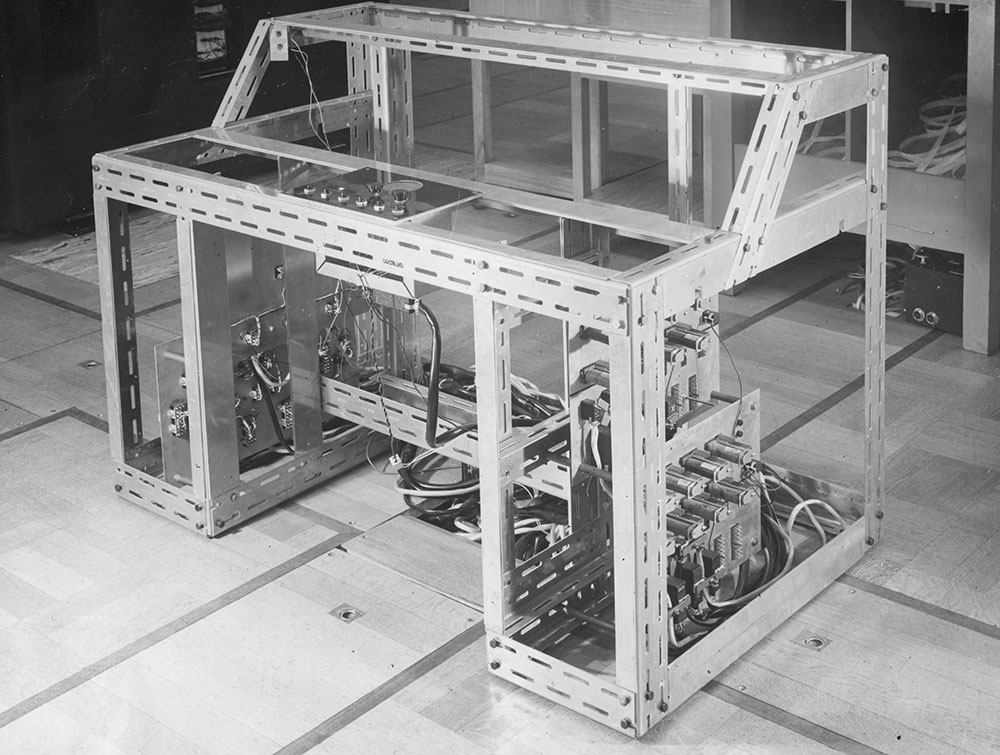
Photo 96 below shows the new addition to LEO I completed and ready for use.
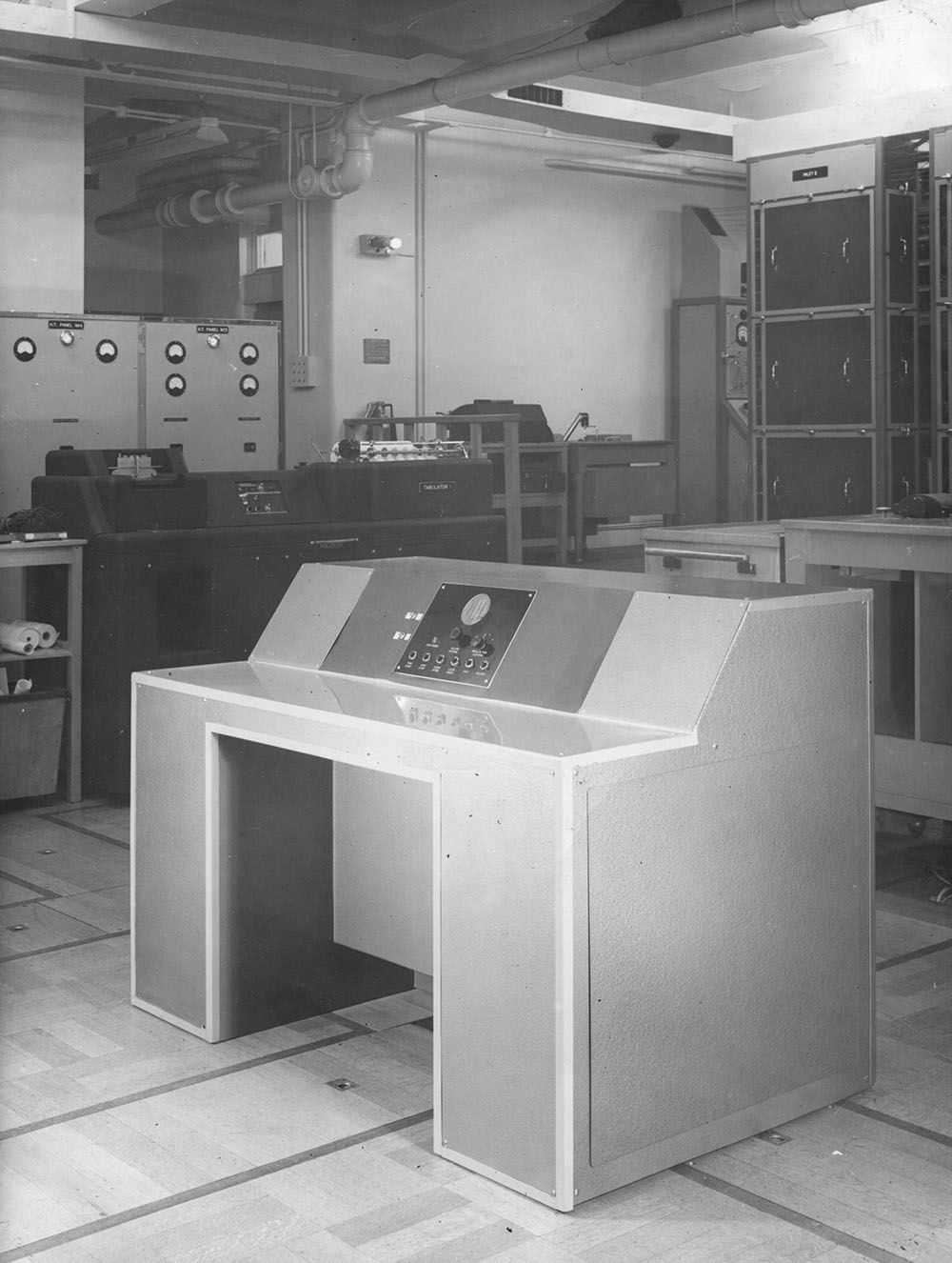
But like so much of LEO I, nothing stays still! As LEO I becomes ever more 'operational' the needs of those working with the machine are expressed in changes and additions to the design of the LEO I installation and the Operator's Console is no exception.
Quite quickly, more controls, and means of displaying what LEO was doing, are added to the Operator's Console. Photo 2 below shows a more populated console that reflects the increasing number of peripheral devices and the needs of the operators to efficiently control them.
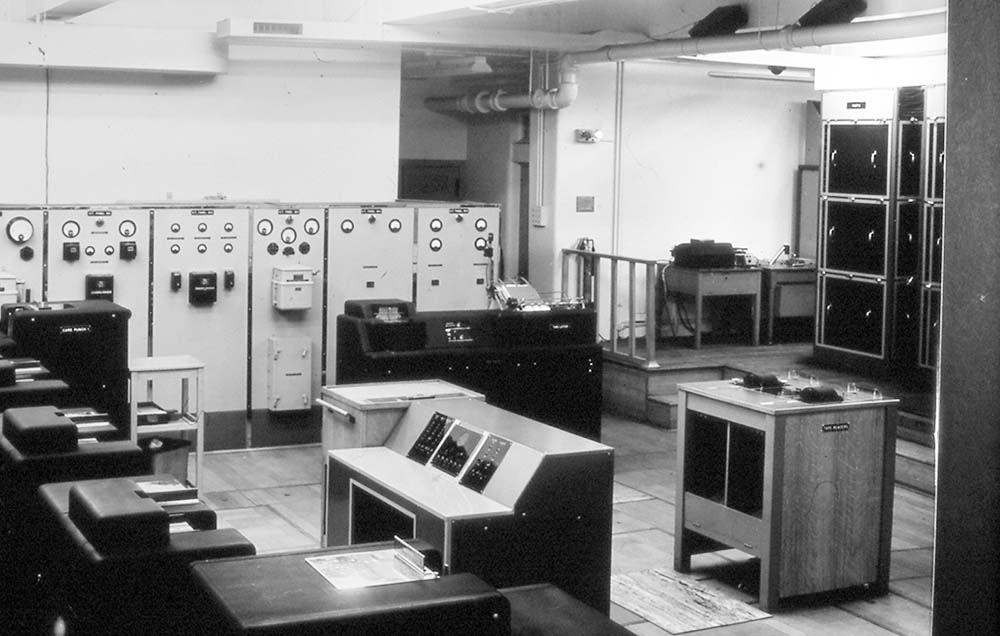
Photo 92 below shows the Operator's Console right in the middle of the peripheral 'action' that shows the separation of 'calculator' (the racks on the right) and the input/output end of the machine that will interface with Lyons administrative processes.
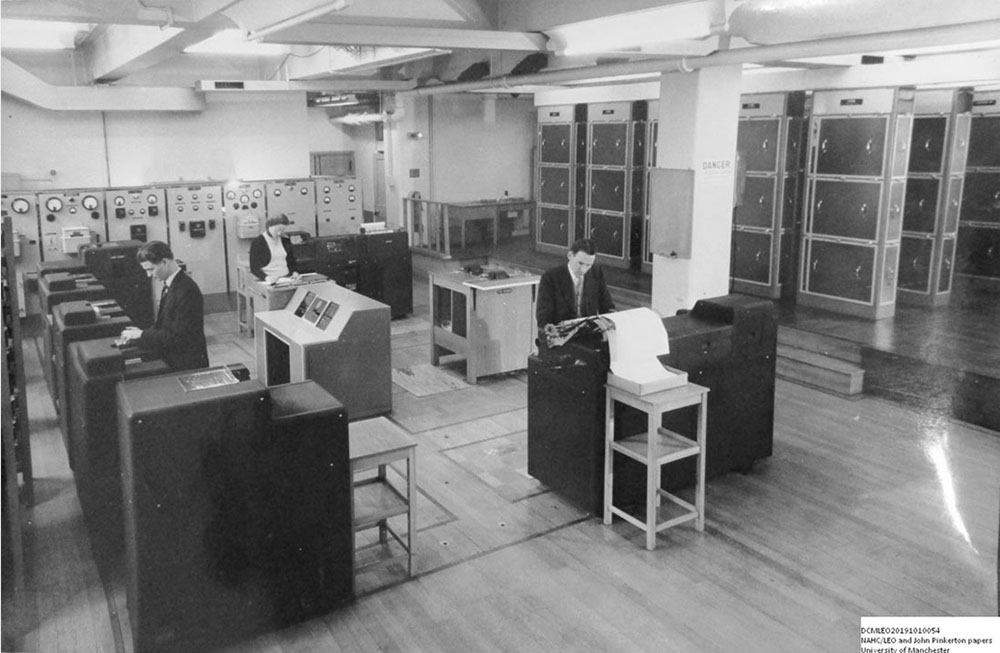
Photo 86 below shows the Operator's Console in its completed form. On the console's left are the controls and indicators for the input and output 'channels', Towards the centre is the visual display enabling an operator to 'see' the contents of store (memory) locations in LEO I. To the right are controls for the printers and the card punches. Operators could now start and stop jobs, direct input and output to different devices and quickly inspect the contents of key LEO memory locations to aid any fault diagnosis and a quick return to a working state.
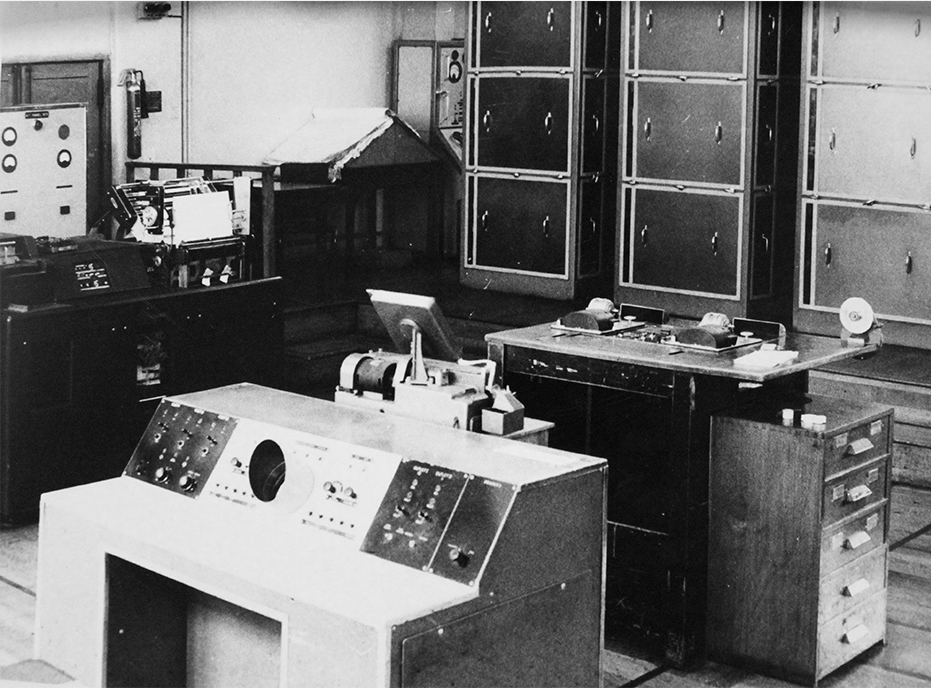
Brian Skillen, a LEO I Operator remarked to us that "... the Operators Control Console - was a subset of the controls on the Engineers Control and provided all the necessary buttons, switches and dials to run jobs from the Operators floor. There were three important documents on the Operators Control Console - A log of jobs when they started, ended and any problems encountered; a job operating manual containing descriptions of the inputs and outputs as well as halts in the job when errors were detected. The description of the halts allowed the operator to determine how to restart the job: A separate note pad to write notes to the on-coming shift on items to watch out for in running further jobs. eg. problems with the quality of paper tape input - registration erratic, holes not punched etc..."
Later versions of LEO, such as LEO II, will bring the Operators Console and Engineer's Console together and place that centrally amongst the peripheral devices. This image of a LEO II console includes components that we would find in the LEO I Operator's Console and Engineer's Console.
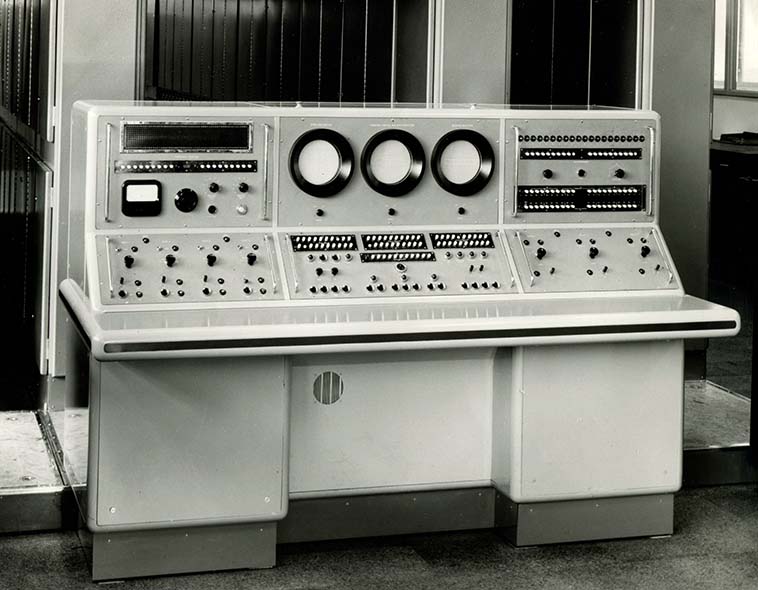
Posted by: Chris Monk
|






